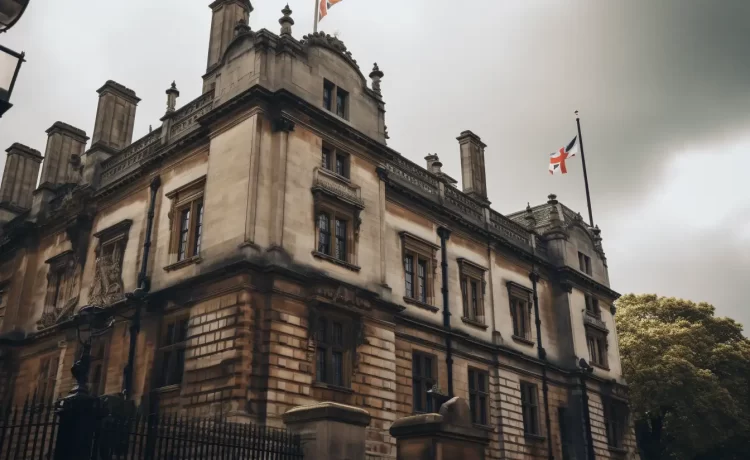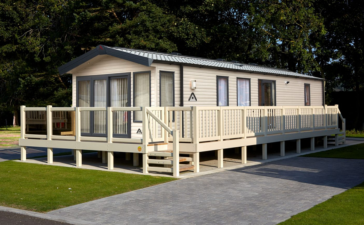Navigating the world of home insurance can be a daunting task, especially when it comes to listed buildings. Listed buildings, by definition, are properties that have been placed on the Statutory List of Buildings of Special Architectural or Historic Interest. These structures are not only unique in their design, but they also hold a significant piece of history. Therefore, insuring them requires a specialised approach.
Home insurance for listed buildings is a tailored policy designed to cover the specific needs and requirements of these properties. Unlike conventional home insurance, it takes into account the unique characteristics of the building, including its age, architectural importance, and the potential complexities involved in repair or restoration. This type of insurance is essential for homeowners of listed buildings as it provides the necessary financial protection against unexpected damages.
However, obtaining home insurance for a listed building isn’t always straightforward. Due to the specialised nature of these properties, insurers often need to assess a variety of factors before offering coverage. These may include the building’s condition, its historical significance, and the cost of materials and labour for repairs. It’s crucial for homeowners to understand these factors and how they impact the insurance process.
What are Listed Buildings?
Diving deeper into the topic, it’s vital to understand what listed buildings are. Listed buildings are structures recognised as having special architectural or historic interest. These properties are officially listed on a national register, known as the National Heritage List for England (NHLE). They’re an integral part of the country’s history and cultural heritage.
There are three categories of listed buildings in the UK: Grade I, Grade II*, and Grade II.
- Grade I buildings are of exceptional interest, only 2.5% of listed buildings are in this category.
- Grade II buildings* are particularly important buildings of more than special interest; 5.8% of listed buildings fall under this category.
- Grade II buildings are of special interest; 91.7% of all listed buildings are in this category.
Each country within the UK maintains its own list, but the principles and criteria for listing are similar. It’s important to note, however, that being listed does not freeze a building in time. It simply means that any changes to the building must have consent and must respect the character and historic interest of the building.
The owners of these properties bear the responsibility of maintaining them in their original state. This often means sourcing specialist materials and craftspeople for repairs and renovations. Consequently, insurance for listed buildings is a crucial aspect to consider when owning such properties.
Understanding the specifics of listed buildings paves the way to better comprehend why home insurance for these structures is specialized and, often, more comprehensive than standard home insurance. Through the lens of history and architecture, it’s clear to see the unique challenges presented by these properties.
The Importance of Home Insurance for Listed Buildings
When it comes to listed buildings, they’re not just another piece of property. They’re a piece of history, a work of art. They’re a part of our heritage. Owning a listed building means being responsible for a piece of history. But it’s not all about the prestige; it’s a responsibility that comes with its own set of challenges.
One of the major challenges that come with owning a listed building is the upkeep. These buildings often require specialist materials and craftspeople for repairs and renovations. These specialist materials can be expensive and sometimes hard to come by. The craftspeople skilled in these traditional methods of construction are also few and far between. This is where home insurance for listed buildings steps in.
- It can provide cover for the cost of these specialist materials and services.
- It can help protect against unexpected damages that could be costly to restore.
- It can provide an element of financial security against the unique risks associated with owning a listed building.
Another factor to consider is the legal aspect. If a listed building suffers damage, it’s not just a matter of fixing it up. The owner is legally obliged to restore it to its original state. Failing to do so can result in hefty fines. Again, insurance for listed buildings can help cover these potential legal costs.
In a nutshell, home insurance for listed buildings is not a luxury, it’s a necessity. It’s what shields the owner from the potential financial pitfalls of owning a piece of history.
Let’s explore how one can secure the right home insurance for listed buildings in the next section.
What Does Home Insurance for Listed Buildings Cover?
Home insurance for listed buildings isn’t your typical homeowner’s insurance. It’s designed to accommodate the unique challenges that come with owning a listed building. But exactly what does it cover?
Insurance for listed buildings typically covers a variety of risks. The most common coverage includes damage from fire, storms, flooding, and other natural disasters. It might also provide protection against theft, vandalism, and liability claims.
However, the coverage can go beyond these basic protections. Given the unique requirements of listed buildings, many policies offer coverage for the specialised materials and craftspeople needed for repairs and renovations. This is a crucial aspect, as repairing a listed building can be significantly more expensive than a standard property due to the need for specialist skills and materials.
Another key coverage is legal costs. Owners of listed buildings are legally obliged to restore their property to its original state if it suffers damage. This can involve complex legal processes, and the insurance can help cover these potential costs.
It’s important to note that the exact coverage can vary between different providers. Therefore, it’s always best to thoroughly review the policy details and consult with an insurance expert to ensure the policy meets the specific needs of the listed building in question.
While this gives a general idea of what to expect, the specific coverages can vary widely. It’s essential to understand that home insurance for listed buildings is not a one-size-fits-all solution. It’s tailored to the individual property and its unique needs and challenges. Therefore, it’s crucial to work with a company that understands the complexities of insuring listed buildings. It’s not just about getting coverage—it’s about getting the right coverage.
Factors to Consider when Choosing Home Insurance for Listed Buildings
When opting for home insurance for listed buildings, there are several factors to bear in mind.
Firstly, understand the nature of a listed building. They’re unique structures and often require specialised materials and craftsmen for repairs. This can result in higher costs compared to standard properties. Hence, it’s essential to check if the insurance policy covers these additional expenses.
Next, consider the level of coverage. This should include protection against natural disasters like storms and floods, as well as fire damage, theft, and vandalism. Liability claims coverage is also important, protecting the homeowner from potential lawsuits related to property damage or personal injury occurring on the premises.
Another crucial aspect is legal expense coverage. Listed buildings are often subject to strict regulations and any alterations or repairs may need to comply with these. If the building suffers damage, restoring it to its original state can be legally complex and costly. Therefore, insurance that covers legal costs can save the homeowner a significant amount of money.
Last but certainly not least, the cost of the policy itself is a key consideration. It’s worth shopping around and getting quotes from multiple insurers to ensure getting the best deal. However, it’s important to remember that the cheapest policy may not provide the most comprehensive coverage.
To ensure they’re making an informed decision, homeowners should consult with an insurance expert. They can provide tailored advice based on the specific needs and characteristics of the listed building.
Choosing the right home insurance for a listed building can be a complex process, but considering these factors can help homeowners navigate it more effectively. They can rest assured knowing their unique property is protected, and they’re prepared for any unexpected events that may occur.
Common Questions About Home Insurance for Listed Buildings
What is home insurance for listed buildings? It’s a specialised type of insurance policy designed specifically for listed buildings. These properties pose unique challenges due to their historical or architectural significance, requiring specialised materials and craftspeople for repairs and renovations.
Why is home insurance for listed buildings critical? These insurance policies provide cover for damage from a variety of risks, including fire, storms, flooding, theft, and vandalism. They also offer protection against liability claims and cover the often high legal costs associated with restoring a listed building to its original state if it suffers damage.
How to choose the right insurance for a listed building? Understanding the specific nature of a listed building, determining the level of coverage needed, considering legal expense coverage, and assessing the cost of the policy are all factors to take into account. Consulting with an insurance expert can provide valuable insights and help homeowners make an informed decision.
What factors impact the cost of home insurance for listed buildings? The cost can be influenced by several factors, including the building’s age, size, construction materials, location, and the extent of renovations or repairs needed. Additionally, the level of coverage selected will also play a role in determining the policy’s cost.
As a homeowner, it’s essential to understand these aspects of home insurance for listed buildings to ensure adequate protection. By doing so, they can safeguard their property and maintain its historical significance for generations to come.
Conclusion
Home insurance for listed buildings isn’t just an option, it’s a necessity. These unique properties come with their own set of challenges, requiring tailored coverage to protect against damage, theft, and liability claims. It’s not just about safeguarding the bricks and mortar; it’s also about preserving history for future generations.
This insurance isn’t standard, it covers the specialist materials and craftspeople needed for repairs. It can even help with legal expenses if the building needs to be restored to its original state. However, it’s essential to review the policy details and seek expert advice to ensure the coverage is fit for purpose.
Choosing the right insurance involves understanding the nature of the listed building, the level of coverage required, and the cost of the policy. Factors that can influence the price include the building’s age, size, construction materials, location, and the extent of renovations needed. By considering these aspects, homeowners can make an informed decision and ensure their listed building is adequately protected.





